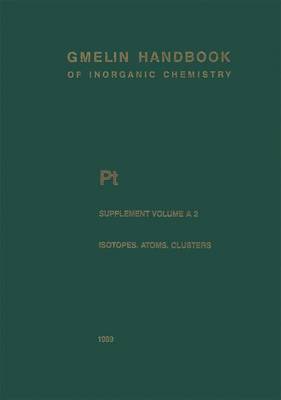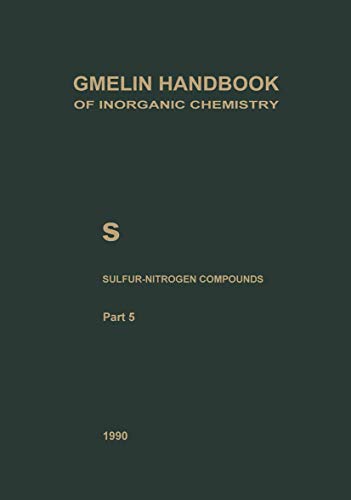Gmelin Handbook of Inorganic and Organometallic Chemistry - 8th edition
2 total works
P-t / P-t / 2
Pt Platinum
by Esther Belin, Yvette Cauchois, Christiane Senemaud, Jean Blaise, Jean-Francois Wyart, Helmut Munzel, and Joachim Wagner
Published 24 February 1989
This volume describes the isotopes, atoms, atomic ions, molecules, and clusters of the six platinum group elements Ru, Rh, Pd, Os, Ir, and Pt. It starts with a compilation of the properties of the isotopes, followed by the description of the formation and separation of the radioactive isotopes. The chapters on the atoms and atomic ions deal with the configuration of the outer-shell electrons, manifested by optical terms and spectra, ionization energy, and electron affinity, as weil as with the energy levels of the inner-shell electrons, manifested by X-ray spectra and Auger electron spectra. The last section gives information on the formation and the physical properties of the plati num group molecules and clusters. Most of the contributions are written by extern al experts (for details, see the back of the titte page). One of the authors (Prof. Y. Cauchois) thanks Dr. M. Othmane for his constant and efficient cooperation in the treatment of the drafts and the checking of the proofs. Frankfurt am Main, January 1989 Dieter Koschel XI Table 0' Contents Page 1 Ru, Rh, Pd, Os, Ir, and Pt Isotopes 1.1 Introductory Remarks . . . . .
S / S-N / 5
S Sulfur-Nitrogen Compounds
by Hans-Jurgen Fachmann, Reimund Jotter, Alfons Kubny, and Joachim Wagner
Published 1 December 1986
The present volume is the first of a series describing acyclic sulfur-nitrogen compounds with sulfur of oxidation number IV. The acyclic sw-N compounds are arranged according to the coordination number of the sulfur. Neutral compounds are described before ions and complex compounds. The preceding series "Sulfur-Nitrogen Compounds" Parts 2, 3, and 4 covers the cyclic sw-N compounds. In this volume, the first section deals with sulfur-nitrogen compounds with 1-coordinate sulfur and begins with the sulfur nitride {thiazyl) radical, SN. This transient molecule was observed in its electronic ground state and several electronically excited states. The descrip tions of the sulfur nitride (thiazyl) ions SN+ and SW follow. The SN+ ionwas studied in the gas phase as weil as in the solid state where it forms salts. Thionitrosyl complexes containing the SN Iigand as a terminal linear unit are described at the end of the first section. The second section concerns Sulfur-nitrogen compounds with 2-coordinate sulfur and starts with the description of poly(sulfur nitride), (SNlx* The preparation, crystal structure, and metallic and superconducting properties of (SN)x, which were extensively studied, fill a !arge part of the volume. Halogen-modified poly(sulfur nitride) such as the widely studied (SNBr )x 04 and Na-modified poly(sulfur nitride) are dealt with in the following chapters.

